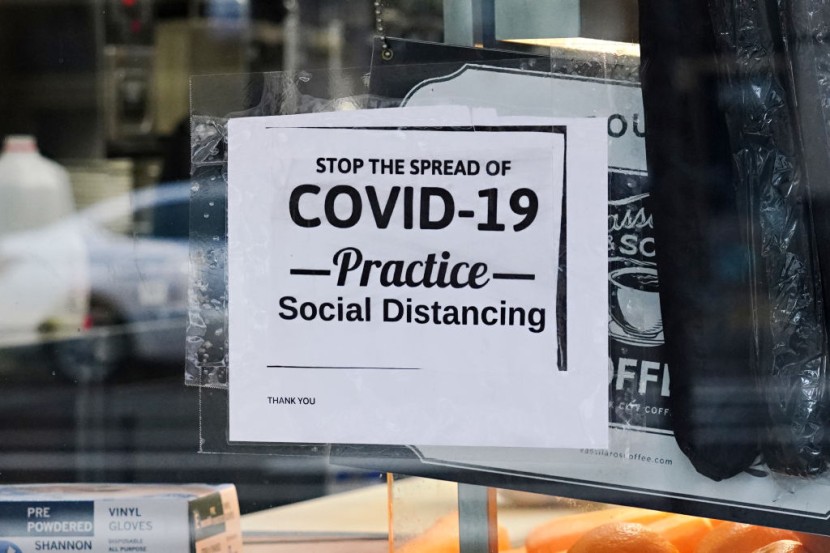
Social distancing indoors at 60 feet is no better than at 6 feet, and exposure time indoors is much more important, a recent study from the Massachusetts Institute of Technology revealed.
Researchers argue there is no advantage to health officials' "6-foot rule" while wearing masks indoors, said a study that contradicts broadly-agreed COVID-19 preventive guidelines. "The distancing isn't benefiting you that much because it's also giving you a false sense of protection because if you're inside, you're as secure at 6 feet as you are at 60 feet," MIT engineering professor Martin Bazant told CNBC.
"Actually, everybody in the room is at roughly the same risk." According to the study published this week in the Proceedings of the National Academy of Science of the United States of America, researchers measured virus exposure risk based on factors including the amount of time spent within, air filtration, and circulation.
They even looked at mask use, vaccinations, and respiratory function like eating, breathing, and chatting. Experts said the amount of time spent indoors with an infected person is more important than the distance between you and them - a consideration that the Centers for Disease Control and Prevention (CDC) and the World Health Organization (WHO) have overlooked.
COVID-19 Vaccine: Studies Find Pfizer, Moderna Safe for Pregnant Women, Says CDC
According to Bazant, 6-foot social distancing rules, which have resulted in the closure of businesses and schools, are not reasonable. He said, "We need scientific evidence communicated to the public in a manner that is not only fear mongering but actually focused on analysis."
He believes the CDC's social distancing recommendations are focused on early research of large-particle respiratory droplets, NY Post reported. "From the start, this emphasis on social distancing has been completely misguided. Neither the CDC nor the WHO have ever really justified it," Bazant said.
The report does not say if there is a gap in safety risk between zero and six feet. Masks help by covering larger respiratory droplets, such as those generated by coughing and sneezing. According to the researchers, most people who spread the coronavirus do not exhibit any of these signs.
Does COVID-19 Vaccine Change Menstrual Cycle? Here Are What To Know
Pathogen-laced droplets circulate across the air as a result of different behaviors that people partake in regularly. The original advice is based on droplets powered by coughing or sneezing, but recent evidence supports the idea that droplets are carried across a room by airflow.
And the method of activity made a difference: exercising, singing, or yelling increased pathogen development, reducing the amount of time anyone might spend indoors before being infected "by an order of magnitude." The study suggests opening windows or adding new fans to keep air circulating is almost as efficient as installing a new filtration device and much less costly, as per Fox News via Yahoo.
US Lifts Pause on Johnson & Johnson COVID-19 Vaccine but Warns Increased Risk of Rare Blood Clots








